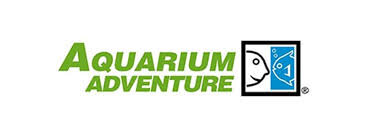Preparing Pond for Winter
Preparing the Pond for Fall & Winter by Laguna
The fall brings about a change in weather that signals the need for winter preparation in colder climate zones. Skim your pond at least once a week, removing any leaves or plant matter. Ponds should be covered with netting in order to catch the leaves and make them easier to remove. Leaves or plant matter left in the pond will deteriorate over the winter producing organic waste. Small, partial water changes are a good idea to help dilute any problem that may exist.
Depending on the climate zone you live in, late fall is when you will start to see the water temperature of your pond drop below 43*F. When the water reaches this temperature, submersible pumps should be removed, cleaned and stored for the winter. Completely take apart and clean your pump, especially the impeller. Storing your equipment without cleaning it could result in damaged equipment or a broken impeller shaft when you restart in the spring.
If you are using a secondary smaller water pump ensure that it has been thoroughly cleaned before use. Your pump should be installed close to the surface of your pond or on bricks to prevent cooling of the lower water levels. This should be done even in climates where the pond freezing over is not an issue. It is important not to leave the pump in the deep area of the pond where fish will be hibernating for the winter. You will also need to disconnect, clean and store pond equipment such as UV sterilizers and external filters. If you have a waterfall you will have to disconnect it for the winter months.
In colder climate zones a deicer and/or aeration kit should be added to keep a hole open to allow water circulation and oxygenation throughout the winter and allow for proper oxygen/carbon dioxide gas exchange for fish to survive the winter.
Fish
As the temperature of the water drops, your fish will require less food. Watch their intake and adjust your feeding. Stop feeding your fish completely when the water temperature of your pond reaches an average of 45 degrees. At 47-50 degrees the fish will begin to hibernate at the bottom of the pond. Regardless of the outside temperature or if your fish come to the surface during the winter do not feed them. They might be surfacing for oxygen not food. If you feed them during this period, the food will not be digested.
In most regions your fish are capable of wintering-over right in the pond, provided it is large enough, deep enough and not over-populated.
Plants
Tropical plants will not survive the winter if left in the pond (in zones 1 to 6a). As soon as the water temperature drops below 60 degrees, they should be removed. Some types can thrive indoors during the winter. Hardy should be cut down to about an inch above the root stem and sunk to the bottom most level. However don't let them cramp the entire floor bottom as the fish will need room too. While cutting back the plants remove the buildup of debris and string algae which may have accumulated on the pots and stems.
